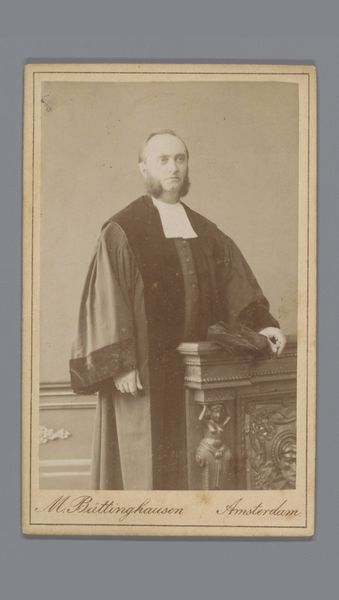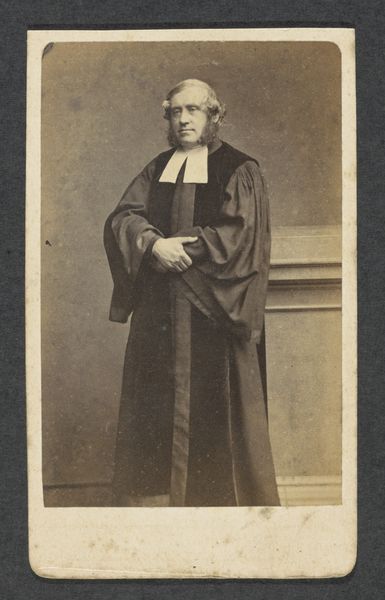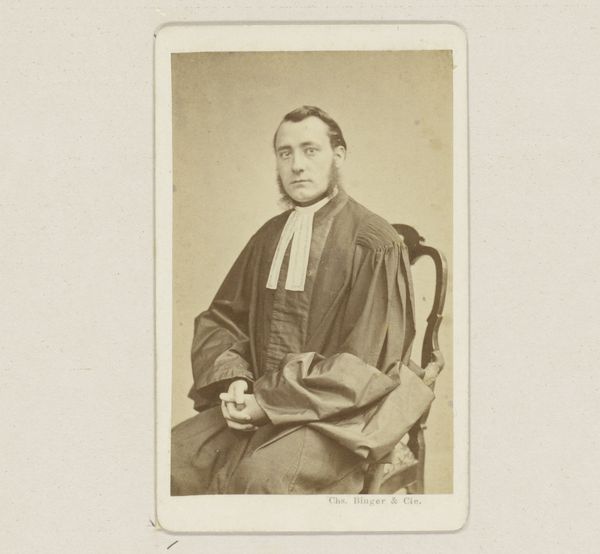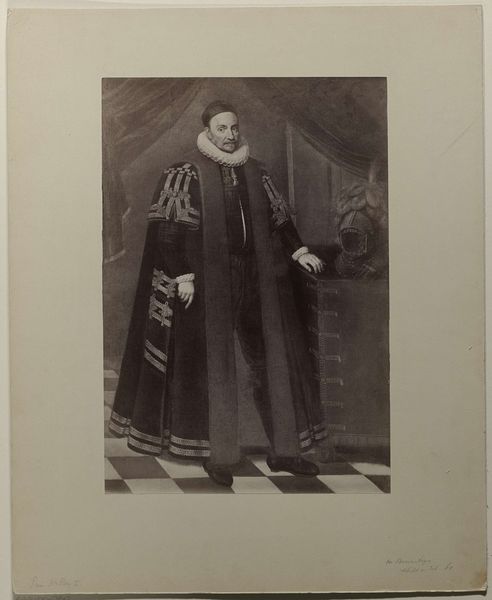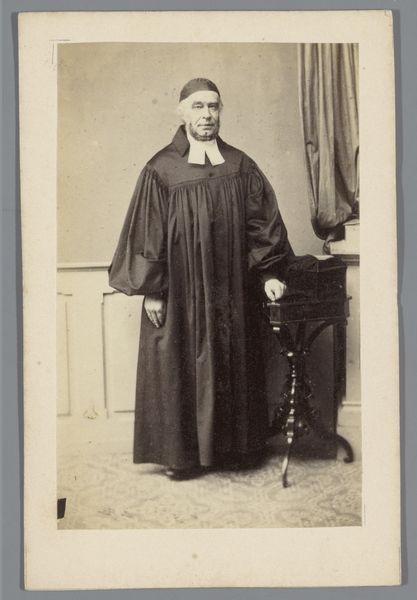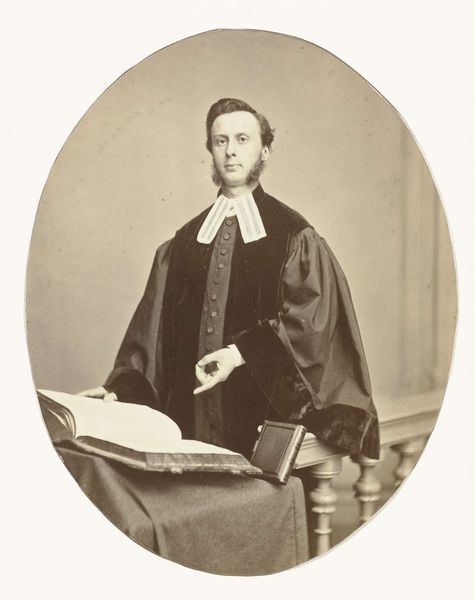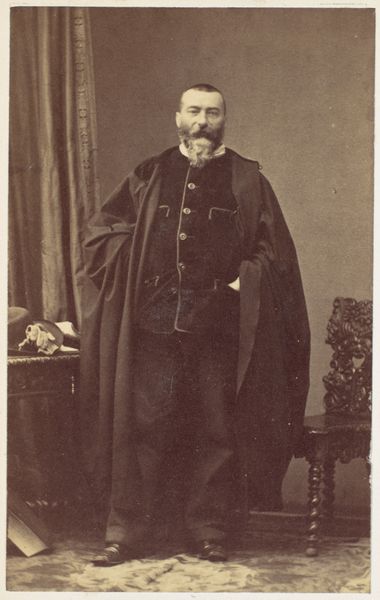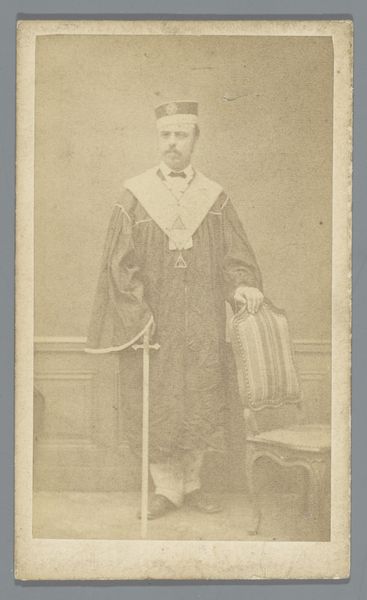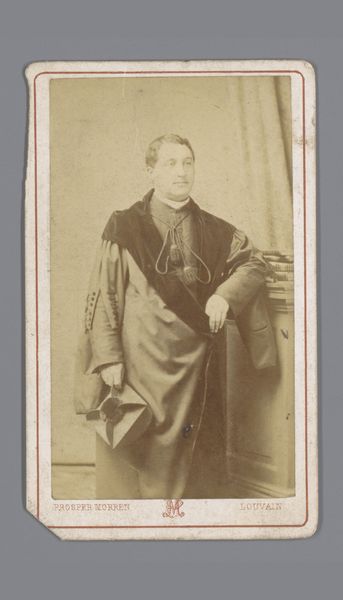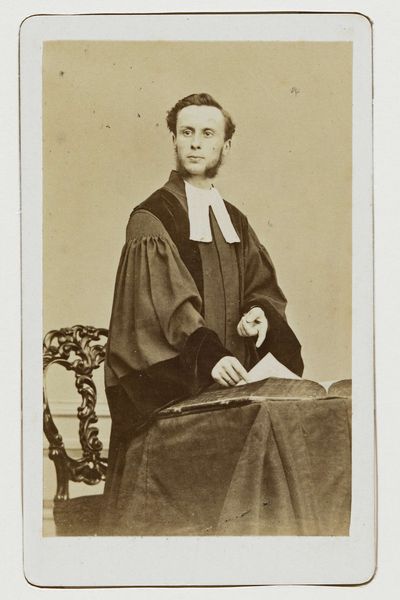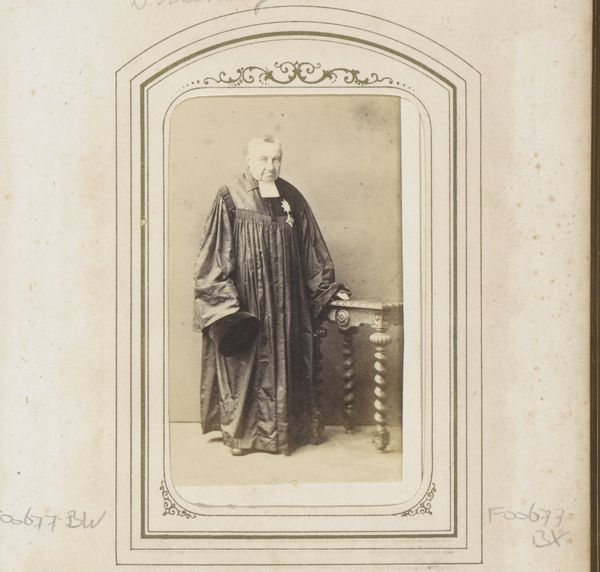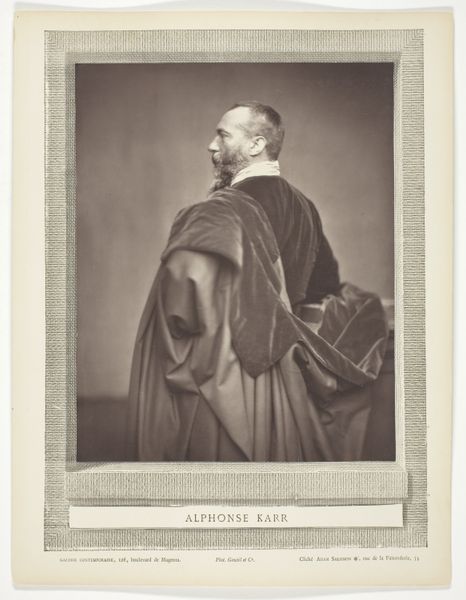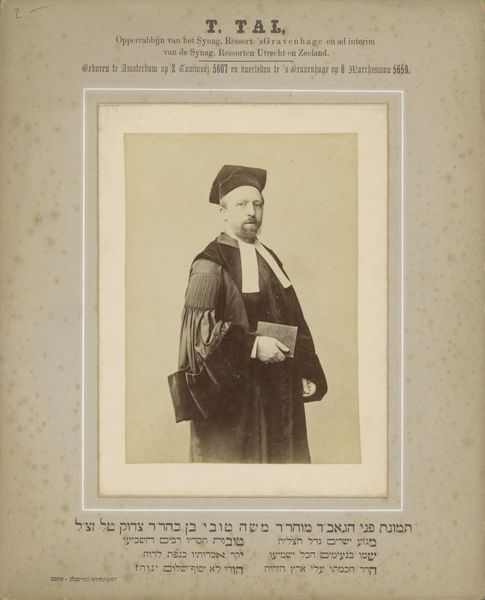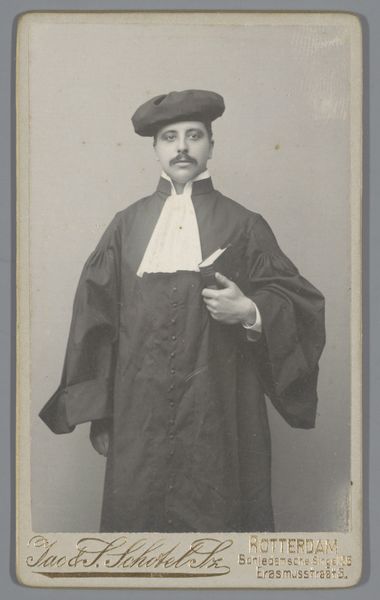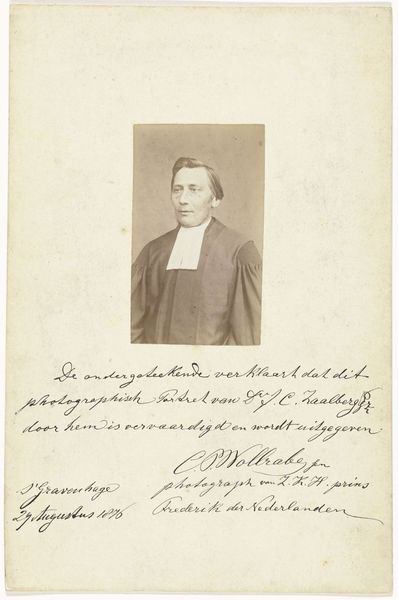
Portret van een onbekende man uit de familie Marmelstein 1878 - 1887
0:00
0:00
albertgreiner
Rijksmuseum
photography, albumen-print
#
portrait
#
archive photography
#
photography
#
historical fashion
#
genre-painting
#
albumen-print
Dimensions: height 105 mm, width 63 mm
Copyright: Rijks Museum: Open Domain
Editor: This albumen print, "Portrait of an Unknown Man from the Marmelstein Family," was taken sometime between 1878 and 1887 by Albert Greiner. The sepia tone and formal pose give it such a stately feel. What strikes you about this piece? Curator: The albumen print offers a fascinating study in tonal values and texture. Note how Greiner has utilized light to define the contours of the man's face, contrasting it with the deep shadows within the folds of his robe. The composition is anchored by the geometry of the book and the ornate table, creating a stable pyramid. Do you notice the subtle differences in the textures rendered? Editor: Yes! The velvety texture of the robe contrasts with the smoothness of his hands and the sharper focus of the book. The whiteness of the clerical bands is very noticeable. Curator: Precisely. These tonal and textural variations, achieved through the albumen process, enrich the visual experience. Consider how the composition, with the subject positioned slightly off-center, generates a subtle tension, preventing the image from feeling static. Editor: So, by looking at the interplay of light, shadow, and form, we can move beyond simply seeing a portrait to understanding how its visual components create meaning. Curator: Indeed. The photograph, viewed through a formalist lens, reveals a carefully constructed arrangement of visual elements working in concert to achieve a specific aesthetic effect. Editor: I see now. The focus on composition and technique really helps to unlock the artistry within what initially seems like a straightforward historical portrait. Curator: And, that attention allows us to understand that images such as this can tell more than simply what things looked like at a specific moment.
Comments
No comments
Be the first to comment and join the conversation on the ultimate creative platform.
